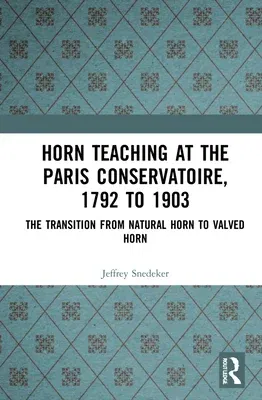Jeffrey L Snedeker
(Author)Horn Teaching at the Paris Conservatoire, 1792 to 1903: The Transition from Natural Horn to Valved HornHardcover, 6 July 2021

Qty
1
Turbo
Ships in 2 - 3 days
Only 2 left
Free Delivery
Cash on Delivery
15 Days
Free Returns
Secure Checkout

Print Length
260 pages
Language
English
Publisher
Routledge
Date Published
6 Jul 2021
ISBN-10
0367553805
ISBN-13
9780367553807
Description
Product Details
Author:
Book Format:
Hardcover
Country of Origin:
US
Date Published:
6 July 2021
Dimensions:
23.88 x
15.49 x
2.03 cm
ISBN-10:
0367553805
ISBN-13:
9780367553807
Language:
English
Location:
Oxford
Pages:
260
Publisher:
Weight:
544.31 gm